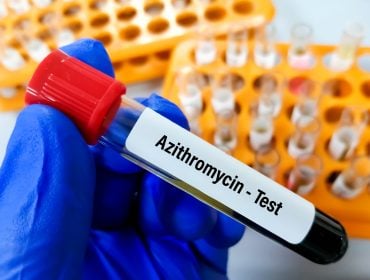How Long Can an STD Stay Dormant Without Symptoms?
HIV | Herpes | HPV | Chlamydia | Gonorrhea | Syphilis
Sexually Transmitted Diseases (STDs) are a significant global health concern. They represent a group of infections primarily spread through all kinds of sex. According to the World Health Organization, more than one million sexually transmitted infections are acquired daily worldwide, indicating widespread prevalence and impact on global health.
However, not all STDs present immediate symptoms. Some can remain dormant or “silent” in an individual’s body for an extended period without showing signs of infection. This dormancy period refers to the time between the contraction of the disease and the appearance of symptoms. During this stage, an individual might not realize they have an STD, but they can still spread it to others. Understanding this dormancy period is crucial for prevention efforts, as many people may unknowingly be carriers of these diseases. The following sections will explore how long various STDs can stay dormant and why regular testing is vital even without symptoms.
Understanding Dormancy in STDs
The term “dormancy” in the context of sexually transmitted diseases refers to a stage where the condition is present in the body but does not show any signs or symptoms. This lack of symptoms can often lead individuals to believe they are disease-free, even though they may be carrying and potentially transmitting an STD.
Dormancy periods can vary greatly depending on the specific STD. Some diseases may become symptomatic within a few days or weeks after exposure, while others can remain dormant for months or even years. Despite this dormancy, these diseases are not inactive. They are still capable of causing damage to the body and being transmitted to others.
The concept of asymptomatic transmission, i.e., the ability to transmit a disease without showing symptoms, is particularly relevant in the context of STDs. Many STDs, such as herpes and human papillomavirus (HPV), can be spread from person to person even when the infected individual is not displaying any symptoms.
This characteristic makes these STDs particularly challenging to control and prevent. An individual can unknowingly carry and spread the disease, leading to further transmission within a population. It also underscores the importance of regular STD testing, as it may be the only way to identify the presence of an STD during its dormant period.
Understanding the dormancy of STDs is crucial for both individuals and public health organizations. It informs strategies for prevention, highlights the need for regular testing, and emphasizes the importance of safe sexual practices even in the absence of symptoms. We were recently asked the question of whether can herpes be dormant for 30 years. We will answer that in a bit.

STDs and Their Dormancy Periods
Understanding the dormancy period of various STDs can help in their early detection and treatment. Here, we’ll examine some common STDs and their potential dormancy periods. So, how long can an STD stay dormant without symptoms? Let’s get some answers.
Dormant HIV
Human Immunodeficiency Virus (HIV) often has an exceptionally long dormancy period. After initial infection, individuals may experience flu-like symptoms, but these typically resolve within a few weeks. After this, HIV can go dormant, with individuals potentially experiencing no symptoms for several years. However, during this time, the virus attacks the immune system. Dormant HIV can be asymptomatic for a decade or longer.
Dormant Herpes
Dormant herpes, caused by the herpes simplex virus (HSV), is an STD that can remain dormant for varying periods. After initial exposure, dormant herpes may present with symptoms in 2 to 12 days. However, many people with dormant herpes may not have outbreaks or signs or be so mild that they’re unnoticed. Hence, dormant herpes can be present for years before it becomes noticeable.
Can Herpes Be Dormant for 30 Years?
Yes, herpes can remain dormant for extended periods, even up to 30 years or more. The herpes virus can stay static in a part of a nerve called the ganglion. It can reactivate due to certain life events or reactions. This is less common but not unheard of.
Stress and lowered immunity can cause the virus to activate suddenly. Even after the initial infection, the virus can be dormant in the body and reactivate several times a year. So can herpes be dormant for 30 years… as crazy as it seems, yes!
Dormant HPV
Human Papillomavirus (HPV) is another STD with a potentially long dormancy period. Some types of HPV can lead to genital warts, while others are associated with certain types of cancer. HPV may remain dormant for years before symptoms (like warts) appear or HPV-related cancer develops.
HPV can remain dormant for an extended period, and the length of this dormancy can vary widely. Some studies suggest that the average dormancy period is about 12-24 months, but it can be much longer in some cases.
HPV can lay dormant for many years after contracting it, and you may never experience symptoms. In most cases (9 out of 10), HPV clears itself independently. It should go away within two years without health problems.
Dormant Chlamydia
Can chlamydia be dormant? Chlamydia is a common std caused by the infection with Chlamydia trachomatis. Chlamydia is known as a “silent” infection because most people who are infected show no symptoms. If symptoms do occur, they commonly pop up within 1 to 3 weeks after exposure. However, even when symptoms are not present, chlamydia can still be transmitted.
Can Chlamydia Be Dormant?
Yes, chlamydia can lie dormant in the body for an extended period, even years. However, it’s important to note that even if chlamydia remains asymptomatic, tests can still detect its presence.
Dormant Gonorrhea
Like chlamydia, dormant gonorrhea is often asymptomatic. When symptoms do occur, they often occur within 2 to 14 days after infection. However, some people may carry the disease for months without knowing it due to the lack of symptoms.
Dormant Syphilis
Syphilis has several stages, each with different symptoms. The primary location presents a single sore (chancre), but multiple sores may exist. This appears at the spot where syphilis entered the body. The sore lasts 3 to 6 weeks and mends regardless of whether or not someone is treated. However, the disease progresses to the secondary stage if adequate treatment is not received.
The dormancy period varies significantly among different STDs. Regardless of symptoms, STDs can cause long-term health problems if not treated. Regular testing is crucial, especially for sexually active individuals, to detect these diseases early and promptly initiate treatment.

Factors Influencing Dormancy Period
The dormancy period of an STD can be influenced by several factors, including the individual’s immune system strength, overall health, age, and even the specific strain of the disease.
Immune System Strength
A robust immune system can often control the spread of infection, potentially prolonging the dormancy period of an STD. For example, in the case of HIV, individuals with a robust immune response may not show symptoms for many years. Conversely, those with weakened immune systems may progress more quickly from HIV to AIDS.
Overall Health
General health conditions can also influence the dormancy period of STDs. For instance, other sexually transmitted infections, malnutrition, stress, or chronic diseases can weaken the body’s defenses, potentially shortening the dormancy period of an STD.
Age
Age can play a role in the dormancy period as well. Younger people generally have more robust immune systems and may not show symptoms of certain STDs as quickly as older individuals. However, this is not a hard-and-fast rule and can vary based on personal fitness and lifestyle factors.
Specific Disease Strain
Different strains of the same disease can also have different dormancy periods. For example, HPV has many different types, some of which cause symptoms much sooner than others. Similarly, various strains of herpes simplex virus (HSV) might exhibit varying dormancy periods.
While the specific dormancy periods of various STDs are essential, it’s crucial to remember that individual factors can influence these timelines. Regular testing and maintaining a healthy lifestyle to support a robust immune system are vital in managing sexual health.
The Danger of Dormant STDs
The existence and transmission of dormant STDs pose a significant public health concern. Their ability to exist without symptoms often leads to unknowing carriers, thereby increasing the risk of transmission and contributing to the spread of these diseases.
Public Health Concern
Dormant STDs can remain in the body for months or even years without triggering symptoms. During this time, the infected person may unknowingly transmit the infection to others, contributing to the spread of STDs in the population. This nature of STDs makes them difficult to monitor and control, leading to a widespread public health concern.
Infections like gonorrhea can stay dormant for up to six months before showing severe signs and symptoms. Similarly, many other STIs can also lie dormant for extended periods. The incredible frequency of such asymptomatic STDs is one factor that makes STDs so common and challenging to control.
Unknowingly Transmitting an STD
The risk of unknowingly transmitting an STD is high due to the dormancy of these diseases. This situation is especially concerning because some STDs can cause health issues if not treated. For example, syphilis can progress through stages and cause significant health issues without treatment.
Even when not showing symptoms, diseases like chlamydia, hepatitis C, HIV, herpes simplex virus, and syphilis can still be transmitted. They can all have latency periods, making it crucial for sexually active individuals to get regular STD testing.
Unfortunately, specific statistics on the transmission of dormant STDs are hard to come by due to the lack of symptoms and subsequent underreporting. However, the Centers for Disease Control (CDC) calculates that there are roughly 20 million new STD infections in the United States each year, many of which are likely due to the transmission of dormant STDs.
In summation, dormant STDs represent a significant public health challenge due to their ability to spread without symptoms. Regular testing, safe sex practices, and increased public awareness are vital in managing this issue.
Importance of Regular Testing
Regular testing for STDs is crucial, particularly for sexually active individuals. It protects personal health and helps prevent the spread of these diseases.
STD testing empowers you to take control of your sexual health. Many STDs can exist without symptoms, so testing is often the only way to know if you have one. Regular checks can help you feel confident in your health and your partner’s safety.
Testing is also critical because untreated STDs can lead to serious health problems. Early detection through routine testing allows for prompt treatment, preventing complications and protecting fertility.
You can get tested for STDs in many places, including doctor’s offices, clinics, health departments, and stdcheck.com.
Regular STD testing provides peace of mind, enabling you to stay ahead with your sexual health and well-being.
Conclusion
Dormant STD
STDs present a significant public health concern due to their ability to remain dormant, often leading to unknowing transmission and subsequent spread. Factors influencing the dormancy period of these diseases can range from the strength of the individual’s immune system, overall health, and age to the specific strain of the disease.
The danger of these dormant STDs lies in their silent spread within populations. This highlights the importance of regular testing, particularly for sexually active individuals, as it is a critical strategy in controlling the spread of these diseases. Regular testing not only aids in early detection but also helps in prompt treatment, thereby preventing potential health complications.
Raising awareness about the nature of STDs, encouraging regular testing, and promoting treatment are crucial steps in managing the spread and impact of these diseases. It’s important to remember that while some STDs may be silent, they are not harmless. Understanding the risks, being proactive about testing, and seeking treatment when necessary are all critical components of maintaining sexual health. So, how long can a std stay dormant without symptoms? We hope this answers the question.
Medically Reviewed by J. Frank Martin JR., MD on August 22, 2023
Secure and Confidential
STD testing services
The fastest results possbile - available in 1 to 2 days

Tagged
Categorized As
Author: STD Check Editorial Team
At STDCheck.com, we go to great lengths to ensure quality content. We’re using our own collection of data. It is not bought or made up for “click-bait” purposes. We don’t entice traffic with cheesy graphics or raunchy headlines. Our information is to promote STD testing, educate people, let go of social stigmas, and bring awareness. We also provide a completely confidential atmosphere through private testing. When we produce an article, it is fact-based. We check it with medical advisors that approve it. Our staff consists of doctors and other medical professionals who peer review the content we make available on STDCheck.com. From all over the world, we have sourced the best and the brightest content developers, including medical professionals, marketing engineers, data scientists, content specialists, and media relations.




